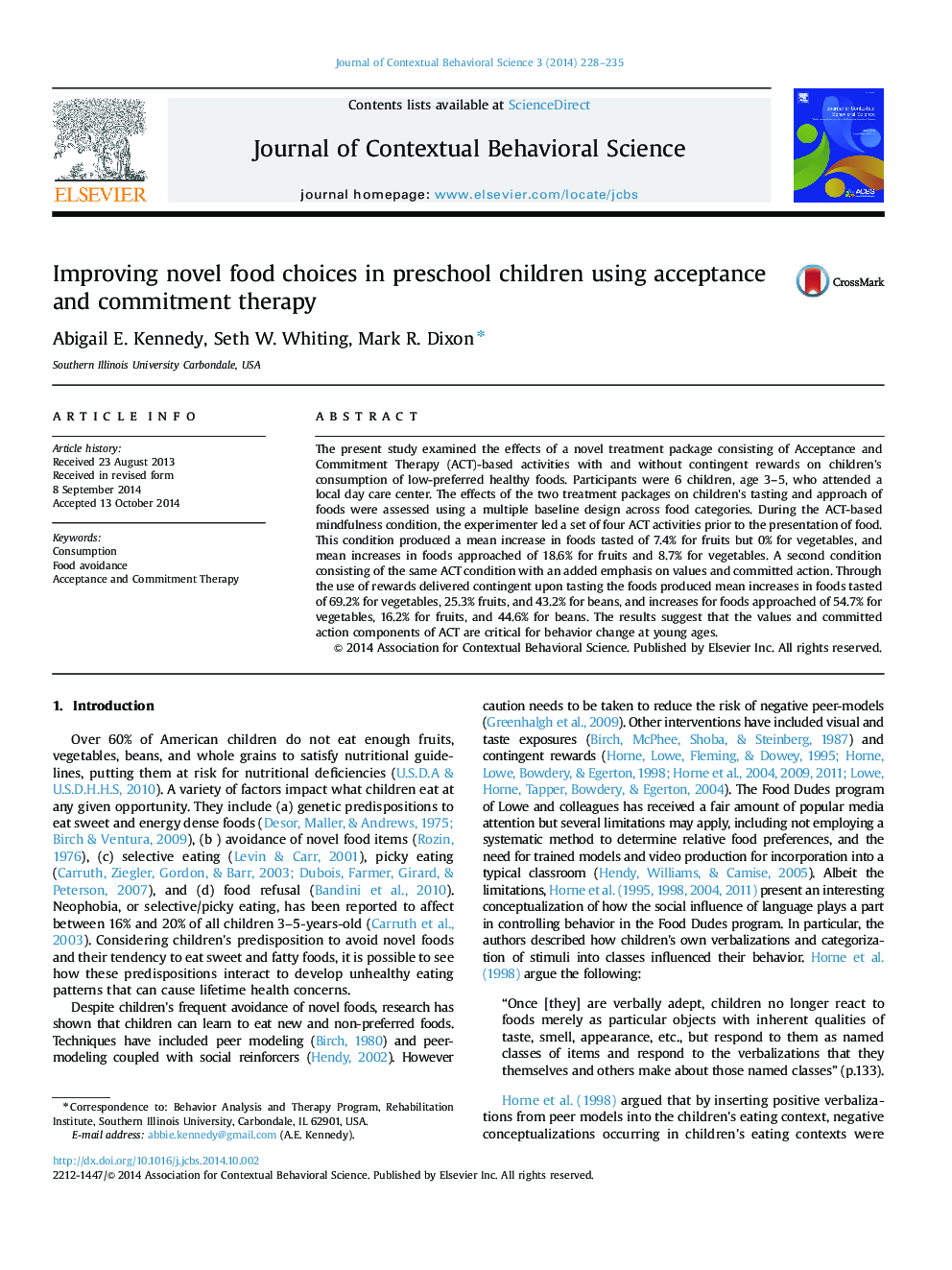| کد مقاله | کد نشریه | سال انتشار | مقاله انگلیسی | نسخه تمام متن |
|---|---|---|---|---|
| 911240 | 917903 | 2014 | 8 صفحه PDF | دانلود رایگان |
• We compared the effects of ACT and rewards on children׳s taste and approach of healthy foods.
• ACT plus rewards increased tasting of foods over baseline levels.
• ACT by itself failed to produce similar increases in tasting but did increase approach of foods.
The present study examined the effects of a novel treatment package consisting of Acceptance and Commitment Therapy (ACT)-based activities with and without contingent rewards on children׳s consumption of low-preferred healthy foods. Participants were 6 children, age 3–5, who attended a local day care center. The effects of the two treatment packages on children׳s tasting and approach of foods were assessed using a multiple baseline design across food categories. During the ACT-based mindfulness condition, the experimenter led a set of four ACT activities prior to the presentation of food. This condition produced a mean increase in foods tasted of 7.4% for fruits but 0% for vegetables, and mean increases in foods approached of 18.6% for fruits and 8.7% for vegetables. A second condition consisting of the same ACT condition with an added emphasis on values and committed action. Through the use of rewards delivered contingent upon tasting the foods produced mean increases in foods tasted of 69.2% for vegetables, 25.3% fruits, and 43.2% for beans, and increases for foods approached of 54.7% for vegetables, 16.2% for fruits, and 44.6% for beans. The results suggest that the values and committed action components of ACT are critical for behavior change at young ages.
Journal: Journal of Contextual Behavioral Science - Volume 3, Issue 4, October 2014, Pages 228–235
